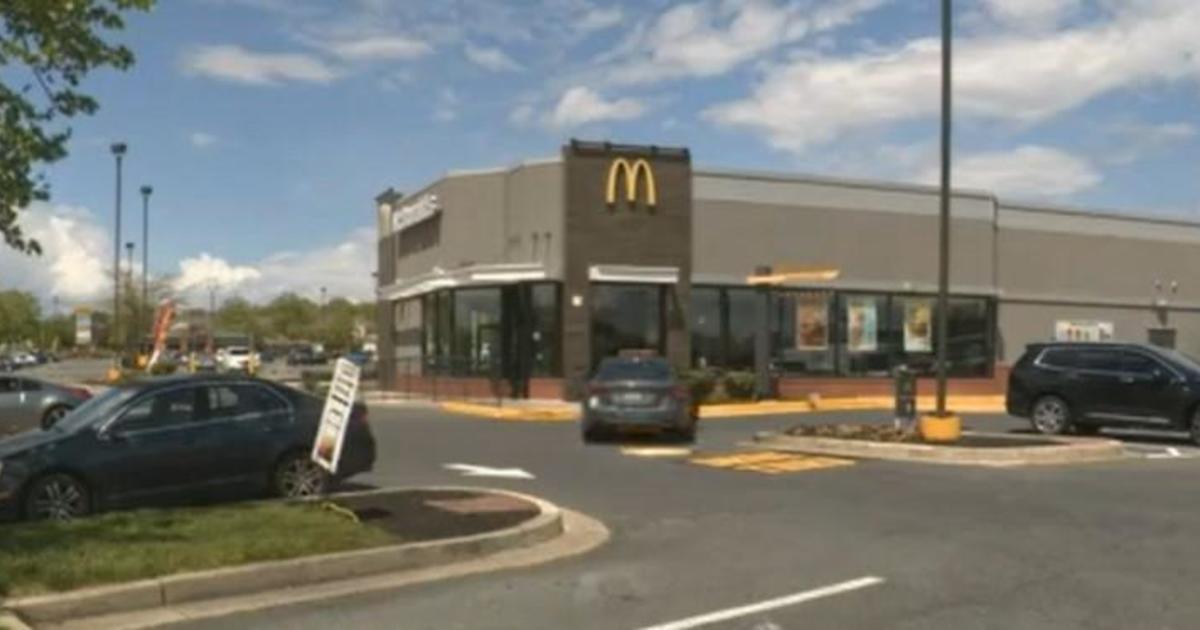Pew Report: Large Numbers Of Poultry On Fewer Farms Unsustainable
BALTIMORE (AP) -- Increasing demand for chicken is being satisfied by fewer farms concentrated in a smaller area where surrounding farmland can't sustainably use the resulting waste as fertilizer, according to a new report being disputed by industry groups.
The study released Wednesday by the Pew Environment Group recommends capping the number of birds in large operations if new methods aren't found to deal with their waste. And it calls on corporations that contract with growers to take more responsibility for chicken waste which can harm waterways when improperly applied as fertilizer, a common disposal method.
Fertilizer running off farmlands, lawns and golf courses contains nitrogen and phosphorous that foster algae blooms once they reach waterways. Those blooms, in turn, can lead to oxygen-deprived dead zones when the algae dies and is broken down.
The report says chicken consumption has more than doubled since the 1970s, becoming the most popular meat nationwide, while the number of growers has dropped 98 percent with most concentrated across the South and Mid-Atlantic in an area it calls the "broiler belt" running from Texas to Delaware.
"What all this means is there is no longer enough crop land for spreading all the manure," said Karen Steuer, director of government relations for the Pew Environmental Group.
The National Chicken Council and U.S. Poultry & Egg Association, meanwhile, said the report is biased against modern farming practices and noted producers have already taken what they said are meaningful steps to further reduce their environmental impact.
In Virginia, for example, all of the poultry litter produced in the state is largely used as crop fertilizer, the industry groups said.
Velma Smith, a government relations officer for the Pew Environment Group, acknowledged progress has been made and a number of state programs exist for reducing the impact of poultry litter.
"But the fundamental word here is balance. We still have not achieved the balance in terms of nutrient loads from manure and poultry litter with what the bay can sustain," Smith said, pointing to a USDA report that found essentially every acre of cropland in the Chesapeake Bay watershed needs better management.
The competing views show how fractious the issue has become. The federally led Chesapeake Bay restoration effort has prompted a court challenge by agriculture and development groups questioning the science behind the "pollution diet" that sets load limits for various geographic areas in the six-state bay watershed.
The Chesapeake Bay Foundation, which has sued the federal Environmental Protection Agency over the slow pace of restoration efforts and took part in a teleconference to announce the report, said the Pew report shows alternatives are needed for disposal of waste from large scale poultry operations.
The foundation said the amount of poultry waste produced in high density production areas on the Delmarva Peninsula, in Virginia's Shenandoah Valley and Pennsylvania's Lancaster County far exceeds the amount that can be used as fertilizer for crops in those areas.
Using manure to produce renewable energy has shown promise, but the bay needs more than pilot projects.
Doug Siglin, federal affairs director for the Chesapeake Bay Foundation, noted "we are on track to have the largest dead zone in the Chesapeake bay this summer in recorded history" but held out hope for a solution, noting chicken litter can be a valuable commodity.
Delmarva Poultry Industry, an industry trade group, said poultry litter is a valuable commodity and growers have adequate outlets, adding Perdue AgriRecycle has a plant near Seaford, Del. that processes litter into pelletized fertilizer that can be shipped off the peninsula.
(Copyright 2011 by The Associated Press. All Rights Reserved.)



